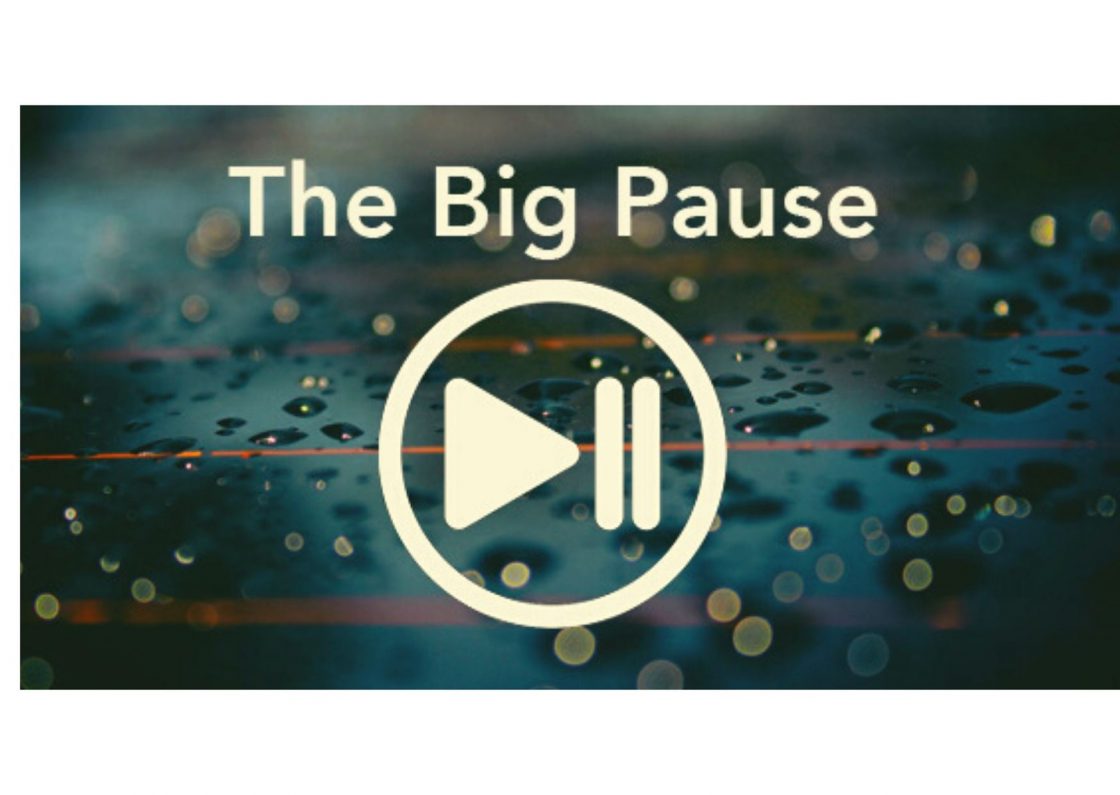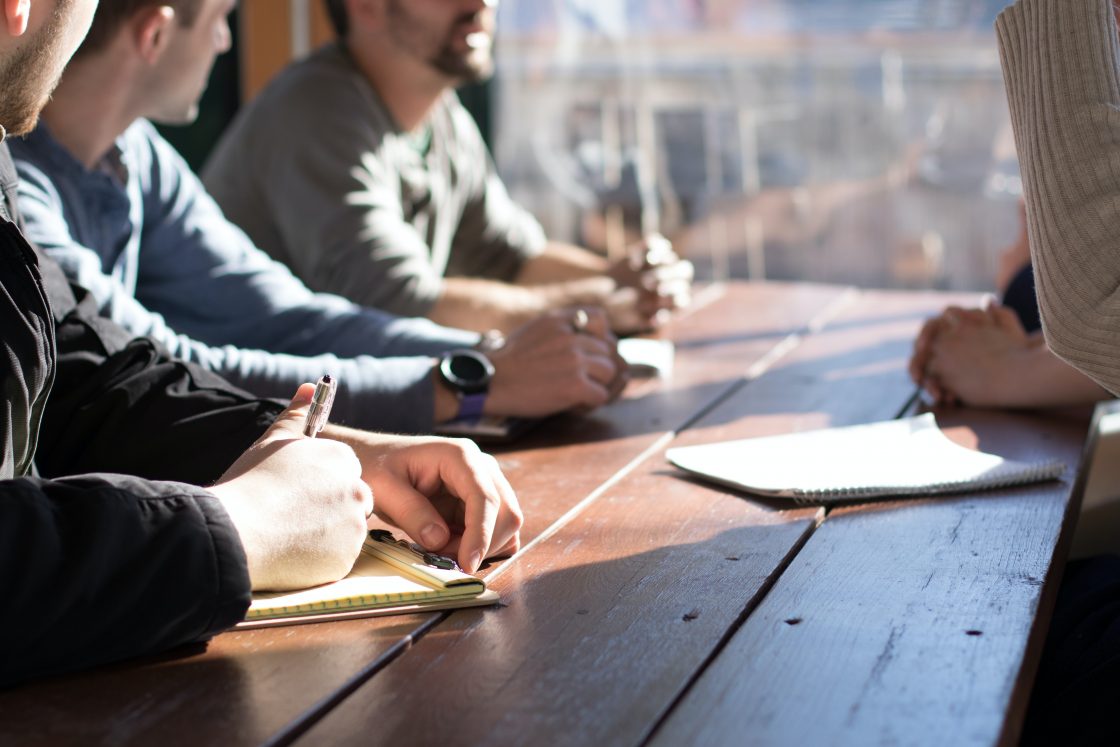An unexpected Pause
So here we all are, at a moment in our history when many things are on PAUSE> some are still working normal hours, others even harder, the key work is still happening to keep us well and functioning, and other work is happening on-line. Some are balancing work and keeping children learning or entertained. Even those who are still busy are waiting and hoping for something else to happen soon.
With our social lives and activities not happening most of us have space that we don’t normally have. Things have a different rhythm and pace to them, and I’ve noticed it can cause real confusion, or peace, or even panic. I have had days that have been really productive and focused and some days that have just disappeared. I’ve got to 3 o’clock and realised that I’ve done one thing and eaten and read and drank tea and water and some puzzles in a book. Huh? I’m a coach for goodness’ sakes, I should be able to organise myself and get on with stuff. I help my clients all the time with this! So what’s going on?
Bending Time
Here’s the thing about time: it’s maleable; it changes shape, texture, direction, feel, and speed and it changes within our own experiences. This is true in a physics context – see Carlo Rovelli’s excellent book “The Order of Time” if you’d like to know more about the science of time. Time actually slows down and speeds up. It also changes according to what’s happening for us and that is expressed in our many metaphors for it; we carve out time, have time pressures, we spend it and save it, it drags and we kill it or waste it and we can even make it. Our present, future and past usually have a direction away from us, or a place that we can point to, and that has various distances to it. And now, in this unusual moment we are individually and collectively experiencing time in a different way.
Structure vs empty space
So what’s the impact of this and how can it be useful? Firstly, let’s get the less useful stuff out of the way. When routine, timetables, deadlines and structure disappear it can take a while for us to recognise the need for some of these things that we take for granted to function. Not having these is liberating for some and induces panic or anxiety for others. You may, like me, also fluctuate between the two. Acknowledging this and knowing it’s happening, is the first step to being able to change it or manage it. You can insert more structure when you’re floundering, and remove it when you’re too pressured.
Minding the gap
This brings me to the pause. Viktor Frankel the renowned neurologist, psychologist and holocaust survivor said: “Between stimulus and response there is a space. In that space is our power to choose. And it is in that choice that lies our growth and freedom.”
When something happens to us, we can react instantly, instinctively or thoughtfully. What Frankel and others have noticed is that if you have a…. pause…. and experience what it is that is happening to you then there is a moment where you can actively consider and choose how you’d like to be, what you’d like to do and what could happen next. Many people have written and spoken about this as ‘being present’. Elizabeth Gilbert in her book Big Magic, Susan David in Emotional Agility and in her excellent Ted Talk in March and I’ve also heard Ian McDermott speak about this recently in his free online gatherings currently being provided through his company ITS.
Being “present” is just noticing things
In my earlier life I was slightly skeptical about the term ‘being present’, I thought it a bit ‘airy-fairy’, didn’t have time for it. (There’s that ‘time’ thing again!) Now I train people to notice things, train their attention on things and ‘being present’ is a cornerstone that can allow the Pause to happen. It creates a space to be open to what we’re experiencing and then choose what we’d like to have happen.
Can you allow what is happening anyway?
At the moment you could be experiencing loneliness, not having enough work, money issues, less motivation, anxiety, missing people, the stress of working from home and home-schooling at the same time, and many more things. The question is can you allow yourself to be present with these? Because they are not necessarily things we have any control over.
When we notice these emotions we own them. They are not ‘us’, they aren’t ‘facts’ and we can then choose, and there are a lot of options but at least it’s a choice you’re making rather than not.
Different strategies for different personalities
I’ve noticed that some people choose to slow down. They revel in the isolation, restrict their zoom gatherings and meetings, choose to know people at a deeper level on screen. They start to be more creative by making things (animations, home made PPE masks, drawing), doing small things they’ve been putting off for years, spend ages watching old movies, order a running machine online, home school the kids by asking them what they’d like to learn rather than follow the curriculum. There are probably as many choices as there are personalities.
When you are ‘present’, that pause becomes tangible and you then enable yourself to be proactive. When you’re proactive, you’re productive and then the purpose happens. Proactive doesn’t mean active, it can mean being still for a while, choosing to reflect and let things go. The pause and choice gives you small but meaningful bits of control in these times when a lot of control has been removed (taken away from you).
Conclusion: Whats in it for you?
There are 2 main terms in this; ‘present’ & ‘pause’. What are they to each other? What happens first? How can everyone understand this in simple terms? That pause is also related to the bigger PAUSE that is happening in this moment in history. It’s giving us more unplanned time and space, without all the normal things that go on with work and life and families and friends, to know more about what we’d like to happen, rediscovering things and people we hadn’t paid attention to, knowing what we’re really missing. This Big Pause can be really enriching when you pay attention to what’s happening for you.
Have you noticed how each day and week since the start of this has been different? For myself and others I’ve spoken to it changed from week 1 to week 2 and now has a rhythm and a ‘feel’ to it. After the initial shock, fear or anxiety, we’ve realised that we’re all in the same boat. And this Big Pause has started to get things to bubble to the surface. What have we engaged more in, or less in? What is important to us?
This big pause can enable us to pivot in big ways. We hadn’t planned this and now I know I am getting drawn towards… something else! This pause creates an opportunity for some self-feedback. This is not an immediate bit of business feedback and you will probably sense it. I’d invite you to be present with it. This Big Pause right now, can be an opportunity to get some perspective and make some resourceful changes, some small, and some may be larger. It’s your time!
(And if you’re getting a sense of what it is for you but you’re not quite managing to see how this translates in your daily life, maybe I can help.) Book a session 🙂


